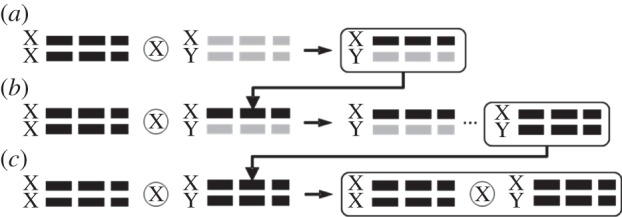Figure 1.

Establishment and maintenance of Y-lines. Here, the Drosophila melanogaster genome is depicted as three sets of autosomes (solid bars) and a pair of sex chromosomes (X and Y). Isogenic 4361 derived chromosomes with recessive markers on each chromosome are depicted in black, while the wild chromosomes from isofemale lines are depicted in grey. Y-lines were established by initially crossing an isogenic 4361 female to a male from each isofemale line (a). The resulting heterozygote male F1 offspring were then backcrossed with 4361 females (b), which produced a range of male genotypes represented by the ellipsis. The F2 male offspring that exhibited all recessive markers (12.5% of the genotypes produced) were then used to establish the Y-lines, as they possessed a common isogenic background, but unique Y-chromosomes. These newly formed Y-line males were then maintained through continual backcrossing with 4361 females (c).
